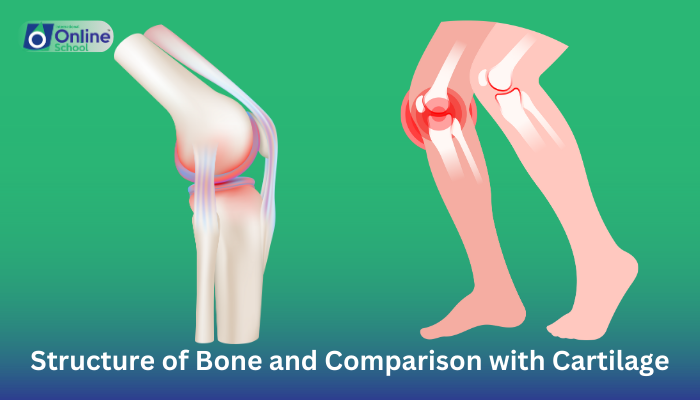
Learning Outcomes:
i. Describe the basic structure of bones and cartilage.
ii. Compare and contrast the key characteristics of bones and cartilage.
iii. Explain the relationship between the structure and function of bones and cartilage in the human body.
Introduction:
Imagine your body as a magnificent house. Bones, the sturdy pillars and beams, provide the framework for support and movement. But what about the flexible joints and springy curves? Those are the work of cartilage, the silent partners in this architectural masterpiece. In this lesson, we'll embark on a journey to understand the structure and secrets of these two essential connective tissues, bones and cartilage.
i. Bone Structure: A Fortress of Strength
Bones are the hardest and most rigid tissues in the human body. This incredible strength comes from their unique composition:
Compact bone: This dense outer layer forms the majority of bone tissue. It's made up of tightly packed mineral crystals (mostly calcium phosphate) embedded within a protein matrix called collagen. Imagine tiny Lego bricks of minerals cemented together by collagen fibers, creating a formidable fortress.
Cancellous bone: This spongy inner layer resembles a honeycomb, with numerous interconnected spaces filled with red bone marrow. This structure provides lightness and flexibility while still offering support.
ii. Cartilage: Nature's Shock Absorber
While lacking the rigidity of bone, cartilage is a champion of flexibility and resilience. Its unique structure allows it to:
Absorb pressure and impact: Unlike bone, cartilage has no blood vessels or nerves, making it less sensitive to pain and ideal for cushioning joints. Imagine a bouncy mattress protecting your bones from the shock of movement.
Reduce friction: Smooth, slippery cartilage surfaces lining joint cavities allow for effortless gliding of bones during movement. Think of a Teflon-coated pan ensuring smooth cooking!
Support and shape: Cartilage provides structural support in areas like the nose, ears, and intervertebral discs, giving them their unique shape and flexibility.
iii. Structure Meets Function:
The unique structure of bones and cartilage perfectly aligns with their functions. Bones, with their mineral-rich rigidity, provide the framework for movement and support the weight of the body. Cartilage, on the other hand, acts as a shock absorber and facilitator of smooth joint movement, ensuring effortless locomotion.
Bones and cartilage, though vastly different in appearance, work together in perfect harmony to keep us moving and thriving. Understanding their structure and function allows us to appreciate the remarkable complexity and interconnectedness of the human body. So, the next time you take a step or wiggle your nose, remember the silent partnership between these amazing connective tissues!